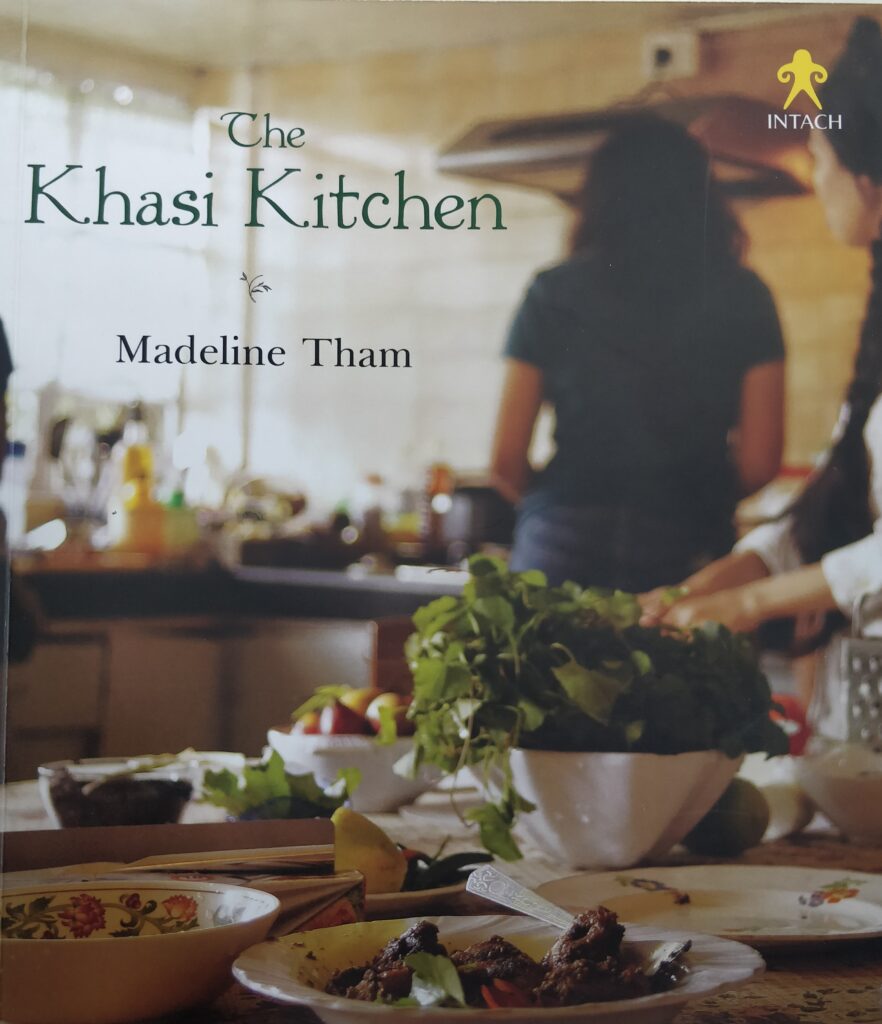The Khasi Kitchen
Khasi mythology recounts the tribe’s original dwelling as ‘Ki Hynñiewtrep’ or “The Seven Huts.” According to this mythos, God, known as U Blei Trai Kynrad, initially divided humanity into 16 celestial families. However, seven of these families remained on earth while the remaining nine resided in heaven. It’s believed that a celestial ladder, situated on the sacred Lum Sohpetbneng Peak, allowed people to freely ascend to heaven until a pivotal event occurred. One day, they mistakenly cut down a divine tree on Lum Diengiei Peak, leading to their eternal separation from the heavens. This tale symbolises the sacred connection between nature, particularly trees, and the divine, emphasising that disrupting nature severs our ties with the divine.
Like the Japanese, the Khasis revere the rooster as a symbol, attributing to it the role of arousing God and facilitating the creation of the Universe. Geographically, Khasian is linked to the Palaungic language of Myanmar. The pre-Khasian people migrated through Upper Burma to the Brahmaputra Valley before settling in Meghalaya. Initially lacking a script, the Khasis adopted the Roman script under the influence of Welsh missionaries, notably Thomas Jones.
The Khasis primarily inhabit the eastern part of Meghalaya, specifically the Khasi and Jaintia Hills. Those in the Jaintia Hills are commonly referred to as Jaintias or Pnars, while those in the northern lowlands and foothills are known as Bhois, and those in the southern tracts as Wars. Despite these distinctions, they all claim descent from the ‘Ki Hynniew Trep’ and identify as Khasi-Pnars or simply Khasis, sharing similar traditions and customs with minor regional variations.
Traditionally, Khasi men wear the “Jymphong,” a sleeveless coat fastened with thongs, while women wear elaborate attire with silver or gold crowns adorned with spikes at the back. Rice serves as the staple food for the Khasis, accompanied by fish and meat. Their social structure is matrilineal, with descent traced through the mother, though the father plays a significant role in family matters.
Inheritance follows a matrilineal system, where the youngest daughter inherits ancestral property. Marriage within the clan is taboo, and ceremonies involve the exchange of rings or betel-nut bags. While Christianity is now predominant among the Khasis, their traditional beliefs revolved around a Supreme Being and various natural deities.
Meghalayan cuisine reflects the region’s diverse tribal influences, with rice, spicy meat, and fish dishes dominating. Traditional Khasi dishes include Jadoh, Ki Kpu, Tung Mumbai, and pickled bamboo shoots. Tungrymbai, a fermented soybean chutney, and Dohkileh, a pork salad, are cherished delicacies. Pumaloi, a coconut-stuffed rice dish, and Pukhlein, a deep-fried rice dessert, are popular treats. These culinary traditions, passed down through generations, highlight the cultural richness of the Khasi people.
Year of publication: 2020















